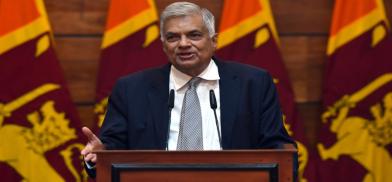Sri Lanka needs well-designed political and economic policy changes for long-term recovery
The government has taken steps to address shortages of fuel and gas to some extent when compared to the earlier situation which had long queues that stretched for kilometres outside fuel and gas stations. But a well-planned recovery plan still cannot be seen that can address the long-term food security issues.

The trajectory of Sri Lankan protests commenced due to the loopholes inspired by the short-term and long-term policies of Sri Lanka. Although Sri Lanka’s woes were triggered by the COVID-19 pandemic its root causes have a long history which revolved around the mismanagement of the previous Rajapaksa government.
Mismanaged policies and corruption as long-term deep-rooted causes provided disastrous consequences. Short-sighted policies such as the chemical fertilizer ban generated repercussions that have no end. As a result of the disastrous policy issues, the economy of Sri Lanka collapsed. A collapsed economy generates a domino effect on many fronts, including creating food insecurity which is going to deteriorate in the upcoming months.
According to the Food Insecurity Experience Scale (FIES), there are three levels of food insecurity: mild, moderate, and severe. When people are experiencing moderate food insecurity people must compromise food both quality-wise and quantity-wise. As indicated by the FAO, people do not have sufficient money or resources for a healthy diet if they undergo a moderate food insecurity status. Furthermore, people are uncertain about their ability to acquire food, and most of the time they skip their meals and run out of food occasionally.
Sri Lanka is experiencing moderate food insecurity status due to political and economic constraints. The inflation rate is skyrocketed, and Sri Lanka is grappling with a record 90 per cent food inflation which can be identified as a critical situation. The political situation is also not favourable although new President Ranil Wickremesinghe was elected by the majority vote of the members of parliament.
Festering unresolved issues
Although the country shows the appearance of recovery, the actual situation is much different. Sri Lanka’s economic and political problems are very similar to the iceberg. The visible part of Sri Lanka’s issues related to politics and economy is only a small part. The rest of the iceberg is much larger and underneath issues in political structure and the economy cannot be seen. This displays the severity of unsolved issues over the years in Sri Lanka.
As International Monetary Fund (IMF) stated Sri Lankan authorities and the IMF team came to a staff-level agreement to assist the authorities to make an economic adjustment and reform policies through a 48-month Extended Fund Facility. According to the IMF, their objectives regarding Sri Lanka’s new fund-supported program are to restore macroeconomic stability and create debt sustainability while focusing on safeguarding financial stability, stepping up structural reforms to address issues like corruption and unleashing Sri Lanka’s growth potential. President Wickremesinghe plans to restructure Sri Lanka’s debts through the first full-year budget. Furthermore, the government has proposed to increase personal and corporate income tax to 30 per cent, which faced many criticisms from many parties.
Structural policy changes required
As Mao Ning, the Chinese Foreign Ministry spokesperson stated, China attaches high significance to Sri Lanka’s difficulties and challenges which is a positive signal that China is willing to help Sri Lanka during these tough times. Beijing has specifically mentioned its objectives to work with relevant parties to generate constructive outcomes in Sri Lanka with regard to easing its debt burden and establishing sustainable development.
The government has taken steps to address shortages of fuel and gas to some extent when compared to the earlier situation which had long queues that stretched for kilometres outside fuel and gas stations. But a well-planned recovery plan still cannot be seen that can address the long-term food security issues. The author suggests following up a two-fold framework (top-down and bottom-up approach) to address the prevailing issues in the fields of food insecurity and the economy.
A majority of Sri Lankans are not happy with the appointment of the current president as he came as the safeguard shield of the previous Rajapaksa regime. The direction of the national protests has completely altered with the arrival of President Wickremesinghe. He has cracked down on the protests which lasted for months demanding a structural change in Sri Lanka. Since his taking over, various undemocratic moves and signals have been highlighted and there is little progress in terms of the political environment. There needs to be a well-designed and practical policy framework accompanied by an honest intellectual discussion about the recovery plan of Sri Lanka in the fields of politics and economy, which seems to be missing.
(The author is an Assistant Lecturer, Department of International Relations, University of Colombo, Sri Lanka. Views are personal. She can be contacted at sandamali@inr.cmb.ac.lk)









Post a Comment